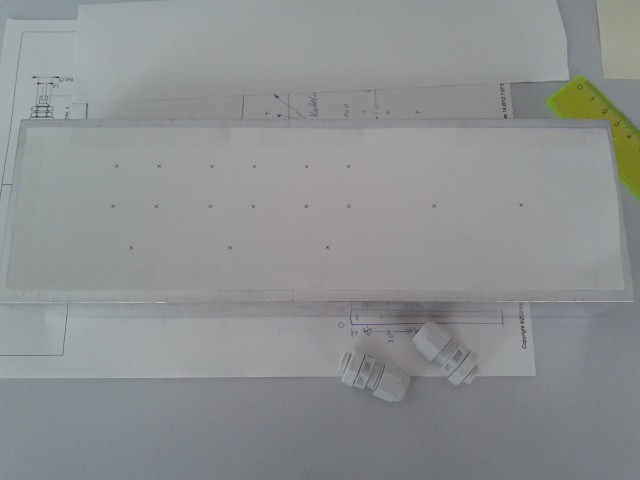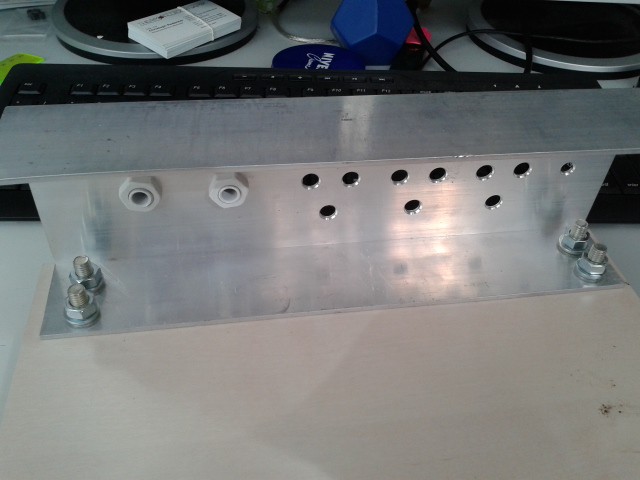ATX power supply conversion for bench usage
I'm converting an Enermax EG465AX-VE(G) into a bench power supply for my hacks.
I'm converting an Enermax EG465AX-VE(G) into a bench power supply for my hacks.
To make the experience fit your profile, pick a username and tell us what interests you.
We found and based on your interests.
Create drilling templates for the front and base plates
Figure out how many 3.3V, 5V, 12V, -5V, and -12V banana jacks you want to have in your front plate. I used two each for the high-current voltages (3.3V, 5V, and 12V) and one each for the low-current ones (-5V and -12V, prepared a hole for -3.3V just in case I need it later).
The front plate will also hold a switch and two 3 mm LEDs (red for standby and green for power good). I also added holes for two cable glands.
Mark the positions of each hole on a piece of paper (or print the whole thing, it doesn't matter).
Do the same thing for mounting the front plate on the base plate. I used 4 M8 screws for that.
Here's a picture of my front template:
 It's missing the marks for the switch and the LEDs, I added them later.
It's missing the marks for the switch and the LEDs, I added them later.
Drill front and base, mount front on base plate
Straight forward: My banana jacks needed 8 mm holes, the cable glands needed 12 mm-ish (12.5? I'm not sure what I used), then there's 5 mm for the switch and 3.2 mm for the LEDs, and finally 8.5 mm for the mounting screws:
 I used additional spring washers for the M8 screws.
I used additional spring washers for the M8 screws.
Drill front and base, mount front on base plate
Straight forward: My banana jacks needed 8 mm holes, the cable glands needed 12 mm-ish (12.5? I'm not sure what I used), then there's 5 mm for the switch and 3.2 mm for the LEDs, and finally 8.5 mm for the mounting screws:
 I used additional spring washers for the M8 screws.
I used additional spring washers for the M8 screws.
Create an account to leave a comment. Already have an account? Log In.
Become a member to follow this project and never miss any updates
By using our website and services, you expressly agree to the placement of our performance, functionality, and advertising cookies. Learn More
hi christoph and thanks. i'm a total beginner with this, but have used atx psu's to power arduinos and motors in my sound installations for a couple of years now.
usually i only need to connect the green cable to a black ground and it works fine but i tried this on a new unit i just bought and it's runs for a fraction of a second then cuts out... is this where the minimum load comes in?
and do you need to add a minimum load on every output as in this project, or usually only on the 5vsb output?
also, if i am unable to get my hands on these power resistors (or even this doesn't work) do you have any other suggestions please?